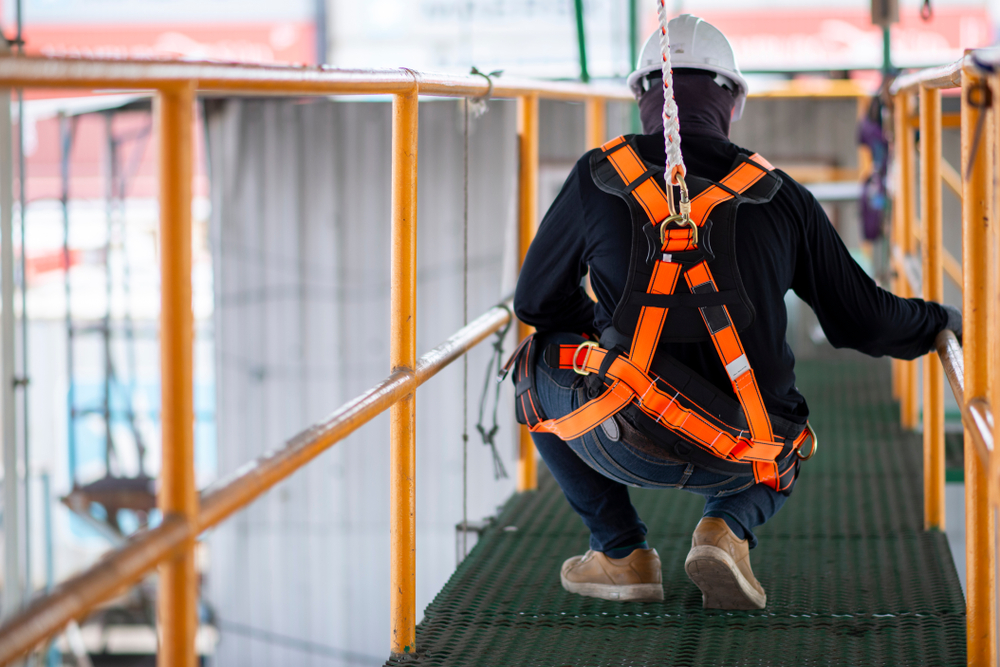Guarding Your Safety: Understanding When Employers Must Provide Guardrails
A safe work environment is a fundamental right for every employee. Guardrails play a crucial role in preventing falls, one of the leading causes of workplace injuries. Understanding when employers are required to provide guardrails empowers workers to identify potential hazards and ensures compliance with safety regulations. This comprehensive guide delves into the regulations governing guardrails, explores the specific situations where they are mandatory,
and offers valuable resources for promoting workplace safety.
The Importance of Guardrails in Fall Prevention
Falls from elevations are a significant concern in many workplaces. Guardrails act as a physical barrier that helps prevent falls from:
- Open-sided platforms and walkways
- Elevated work surfaces
- Floor holes and openings
- Roofs
By providing a secure barrier, guardrails significantly reduce the risk of falls and the potential for serious injuries.
Understanding Guardrail Regulations: A Focus on OSHA
In the United States, the Occupational Safety and Health Administration (OSHA) establishes safety standards for various workplaces. These standards outline specific requirements for fall protection, including the use of guardrails. The key OSHA standard governing guardrails is:
- 29 CFR 1910.29: Fall Protection Systems and Falling Object Protection – Criteria and Practices (https://www.osha.gov/fall-protection)
This standard outlines specific regulations regarding guardrail design, construction, and installation. Here’s a breakdown of some key points:
- Height Requirements: Generally, guardrails are required for walking/working surfaces elevated 4 feet or more above the surrounding level in general industry workplaces, 5 feet in shipyards, 6 feet in construction, and 8 feet in longshoring operations.
- Guardrail Strength and Design: Guardrails must be able to withstand a force of at least 200 pounds applied in a downward or outward direction. Additionally, they must have a top rail height of 42 inches (plus or minus 3 inches) above the walking/working surface.
Beyond Height: Additional Circumstances Requiring Guardrails
While height is a primary factor, there are other situations where OSHA mandates guardrails, regardless of the elevation:
- Open-sided platforms and walkways: Even at lower heights, guardrails are necessary to prevent falls from open-sided platforms or walkways.
- Dangerous Equipment or Machinery: Guardrails are vital around vats, pits, conveyor belts, or other dangerous equipment to prevent accidental falls or contact.
- Falling Object Protection: In some cases, guardrails can serve a dual purpose by preventing falls while also protecting workers from falling objects.
Employer Responsibilities Regarding Guardrails
Employers are legally obligated to comply with OSHA regulations concerning fall protection. This includes ensuring that:
- Guardrails are installed in all areas mandated by OSHA standards.
- Guardrails meet the specified height, strength, and construction requirements.
- Guardrails are maintained in good condition and inspected regularly for any damage or deterioration.
- Employees receive proper training on the safe use of guardrails and fall protection procedures.
Employee Rights and Responsibilities
Workers have the right to a safe work environment and can refuse unsafe work practices. Here’s what employees can do:
- Report unsafe working conditions: If you notice a lack of guardrails or any potential fall hazards, report it to your supervisor or relevant safety authorities.
- Use provided fall protection equipment: If guardrails are unavailable, utilize alternative fall protection measures provided by the employer.
- Maintain awareness of surroundings: Stay vigilant and be aware of potential fall hazards in your work area.
Promoting a Culture of Workplace Safety
Beyond legal mandates, fostering a culture of safety is crucial for preventing workplace accidents. Here are some ways to achieve this:
- Employee Training: Regularly train workers on fall protection practices, including the proper use of guardrails and other safety equipment.
- Safety Inspections: Conduct regular safety inspections to identify and address potential fall hazards.
- Hazard Communication: Encourage open communication so that employees can report unsafe conditions without fear of reprisal.
FAQ: Guardrails and Workplace Safety
Here are some frequently asked questions to empower workers and employers with knowledge and address common concerns regarding guardrails:
- Can I request a guardrail even if it’s not required by OSHA standards? Yes, you can absolutely request additional fall protection measures if you feel unsafe working at a specific location. Open communication with your employer is crucial.
- What are some alternatives to guardrails for fall protection? Depending on the work situation, alternatives like personal fall arrest systems, safety nets, or warning lines might be acceptable options.






More Stories
Where to Watch USMNT vs Jamaica National Football Team
How I Met My Monster
How Should a Ring Fit